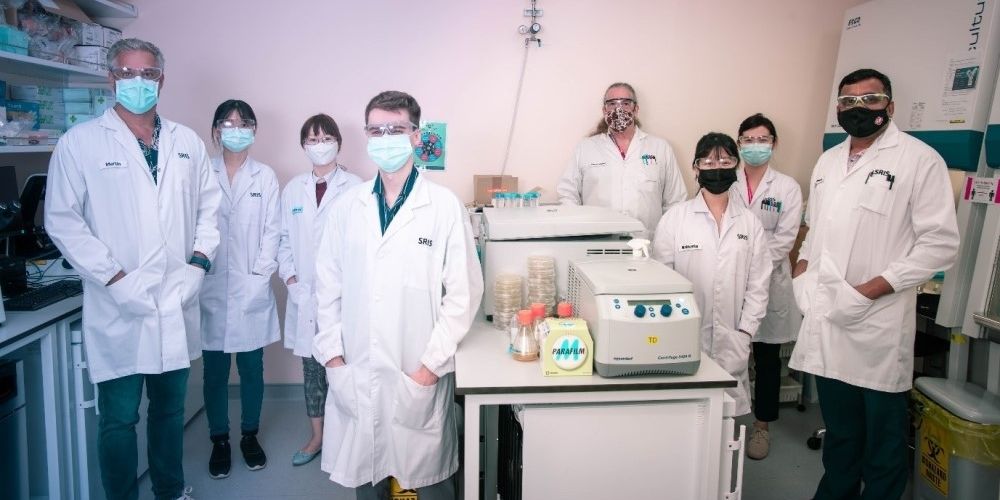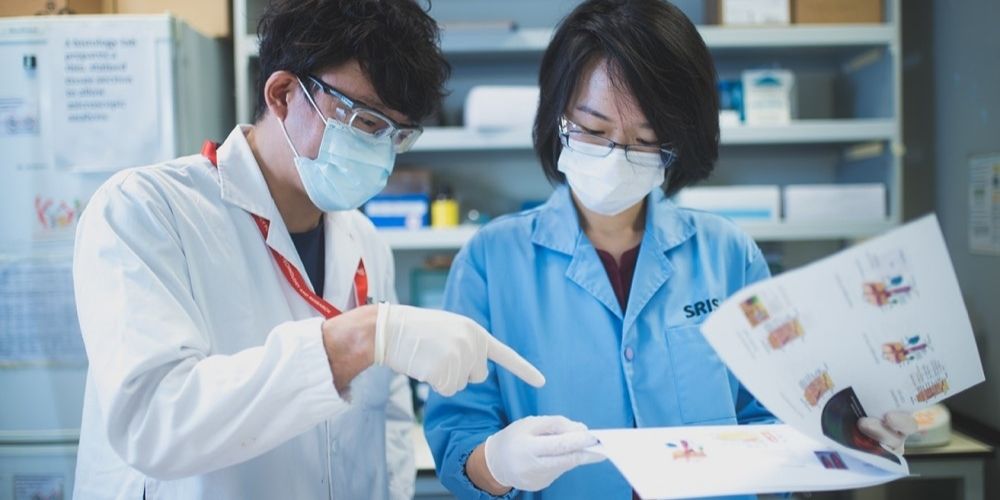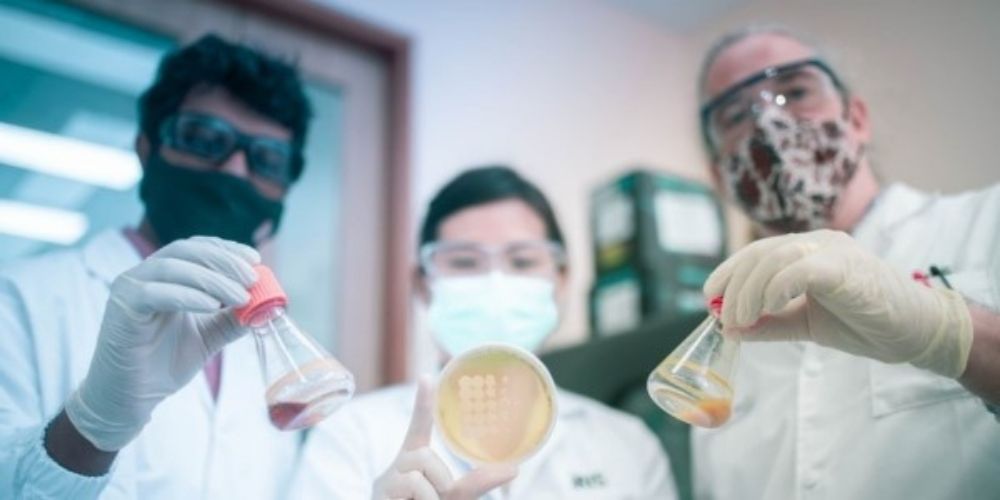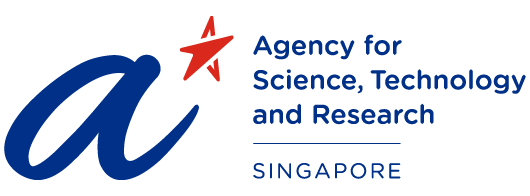A*STAR NEWS
Demystifying Asian Skin Microbiome
The Asian Skin Microbiome Programme conducts cutting edge research on how microbial diversity affects skin health.
The skin is the largest organ of the human body and has many important functions. As a barrier, it protects the body from external elements. It also helps to regulate temperature and enables the sensations of touch, heat and cold.
It is home to trillions of microbes. These microscopic organisms, which include bacteria, fungi, and viruses, are collectively referred to as the skin microbiome. Skin microbes are often harmless, and in some instances may benefit us by educating the immune system and preventing transient pathogens from colonising the skin surface.
The Asian Skin Microbiome Programme (ASMP) advances understanding of the relationship between the skin and its microbes to uncover insights into skin disorders such as eczema, psoriasis, and dandruff. Skin health is a result of, or impacted by, the skin microbial community. The programme is jointly led by the Skin Research Institute of Singapore (SRIS) and the Genome Institute of Singapore (GIS). SRIS is a tripartite collaboration between the Agency for Science, Technology and Research (via its A*STAR Skin Research Labs, or A*SRL), the National Healthcare Group (NHG), and the Nanyang Technological University (NTU).
Today, there is limited data on the skin microbiome in Asian ethnicities and its impact on skin health, and the ASMP aims to rectify this important knowledge gap. The programme would leverage this new knowledge to develop improved skin treatments and support Asian-centric product innovation.
The ASMP brings together researchers and clinicians with multi-disciplinary capabilities in skin biology, big data, omics analytics and skin microbiology, to deliver an integrated platform of assets and advanced technologies. The platform will enable investigation of the function of the skin microbiome and provide avenues for the testing of hypotheses and intervention strategies.
 ASMP researchers in Dr Thomas Dawson (fifth from left)’s laboratory untangle fungal/host communication for eukaryotic microbiology.
ASMP researchers in Dr Thomas Dawson (fifth from left)’s laboratory untangle fungal/host communication for eukaryotic microbiology.
ASMP researchers are developing experimental capabilities to push the boundaries of microbiome research. This includes new sequencing analysis, novel methodologies for assessing skin metabolites, identifying new virulence and communication pathways, identification of Asia-specific fungal resistance mechanisms, and validated metatranscriptomic as well as micro-array technologies to measure microbiome response to interventions. The goal is to uncover findings that will enable us to develop novel microbial-based approaches for treating these disorders and improving skin health in Singapore and beyond.
The major outcome of the programme? The generation of a unified skin microbiome database comprising of skin metagenomics, metabolomics and lipidomics across a range of diverse Asian ethnicities and age groups. This will then be paired with extensive questionnaire information and skin phenotyping data to form a holistic view of the skin microbiome within the Asian population.
Bringing An Asian Focus To Skin Microbiome Research
Asian skin microbiome represents an important clinical and therapeutic opportunity, as most research on skin microbiome thus far has been conducted in North American and Western Europe.
ASMP aims to elucidate baseline skin microbiome in Asian ethnicities, understand their role in skin health and disease, and identify key targets to improve skin health through restoration or maintenance of microbiome. ASMP researchers in Dr John Common’s laboratory
ASMP researchers in Dr John Common’s laboratory
As part of the programme, researchers are collecting skin/health data and microbiome samples from thousands of healthy Singaporeans across various ethnicities in partnership with the Health for Life in Singapore (HELIOS) cohort and Growing Up in Singapore Towards healthy Outcomes (GUSTO) cohort, providing unprecedented insight into skin microbiome in the Asian population. The comprehensive dataset covers a multitude of skin parameters including microbiology, physical skin characteristics such as pH and moisture content, as well as lifestyle factors. Through longitudinal studies on a well-characterised and recallable cohort, the programme studies how natural life changes such as puberty and menopause impact skin physiology and disease predisposition.
“This programme uses cutting edge technologies to explore a new frontier in skin health – the microbiome. Ethnicity and climate have a significant impact on the skin microbiome, so Singapore is ideally suited to lead these studies. A deeper understanding of the skin microbiome will impact diagnosis and treatment of a range of skin disorders both in Singapore and globally,” says Dr Leah Vardy, Covering Executive Director of A*SRL.
Healthy Skin: More Than Meets The Eye
 Knowing how the microbial function with cultures provide an important mechanistic basis for understanding the skin microbiome
Knowing how the microbial function with cultures provide an important mechanistic basis for understanding the skin microbiome
ASMP adopts a strategic approach by setting out to define “healthy skin”.
Dr Thomas Dawson, Senior Principal Investigator with A*SRL explains why this approach is unique, “Usually, if I asked someone what healthy skin means, they would say it means that it is not dry or oily, or ‘absence of imperfection or disease’, but these are not descriptions of ‘healthy’ skin. The concept of what is healthy skin remains pretty much undefined. So that's our goal - to find out, across healthy individuals, the physical characteristics of their skin. What are the quantifiable, measurable characteristics that correlate with healthy skin?”
The researchers endeavour to identify molecules made by microbes that communicate with our skin and modulate its inflammatory response, and to determine which microorganisms are associated with healthy skin and are worth fortifying.
When asked where he sees the programme in the next few years, Dr Dawson comments, "I think three years from now we will have a strong picture of what healthy skin in Asian ethnicities looks like, in terms of many different parameters. In terms of microbiology, I'd like to think that we will have figured out a panel of molecules that facilitates communication between our skin and our skin microbial community. We should also have a collection of products that are able to treat extremely challenging inflammatory skin diseases. I also see us expanding our footprint and having many more collaborations, enabling us to do bigger studies more quickly."
Was This Article Helpful ?
A*STAR celebrates International Women's Day

From groundbreaking discoveries to cutting-edge research, our researchers are empowering the next generation of female science, technology, engineering and mathematics (STEM) leaders.
Get inspired by our #WomeninSTEM
